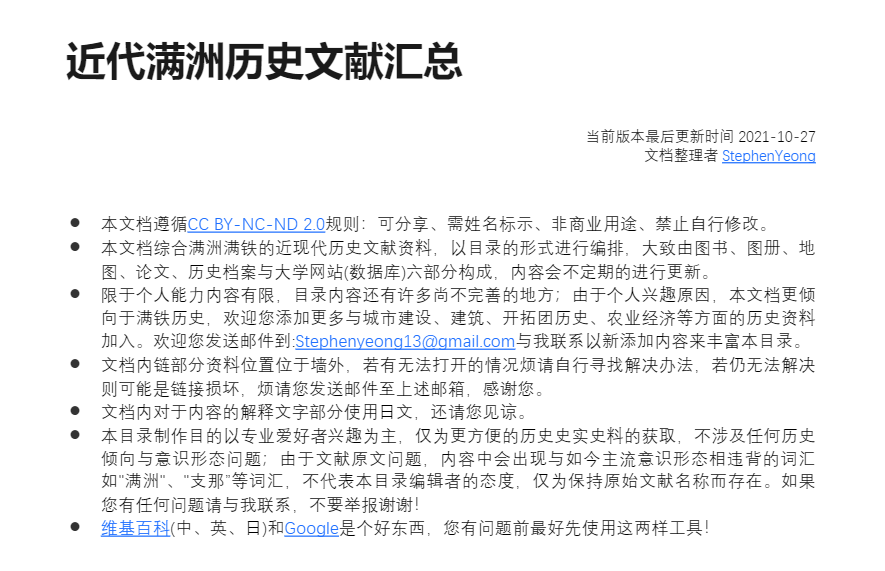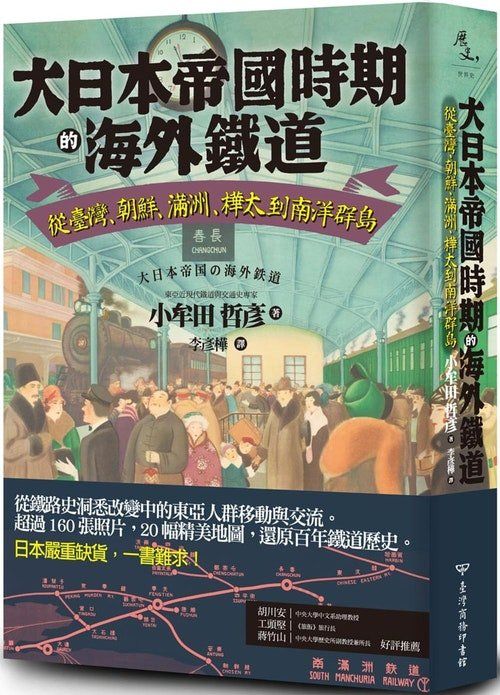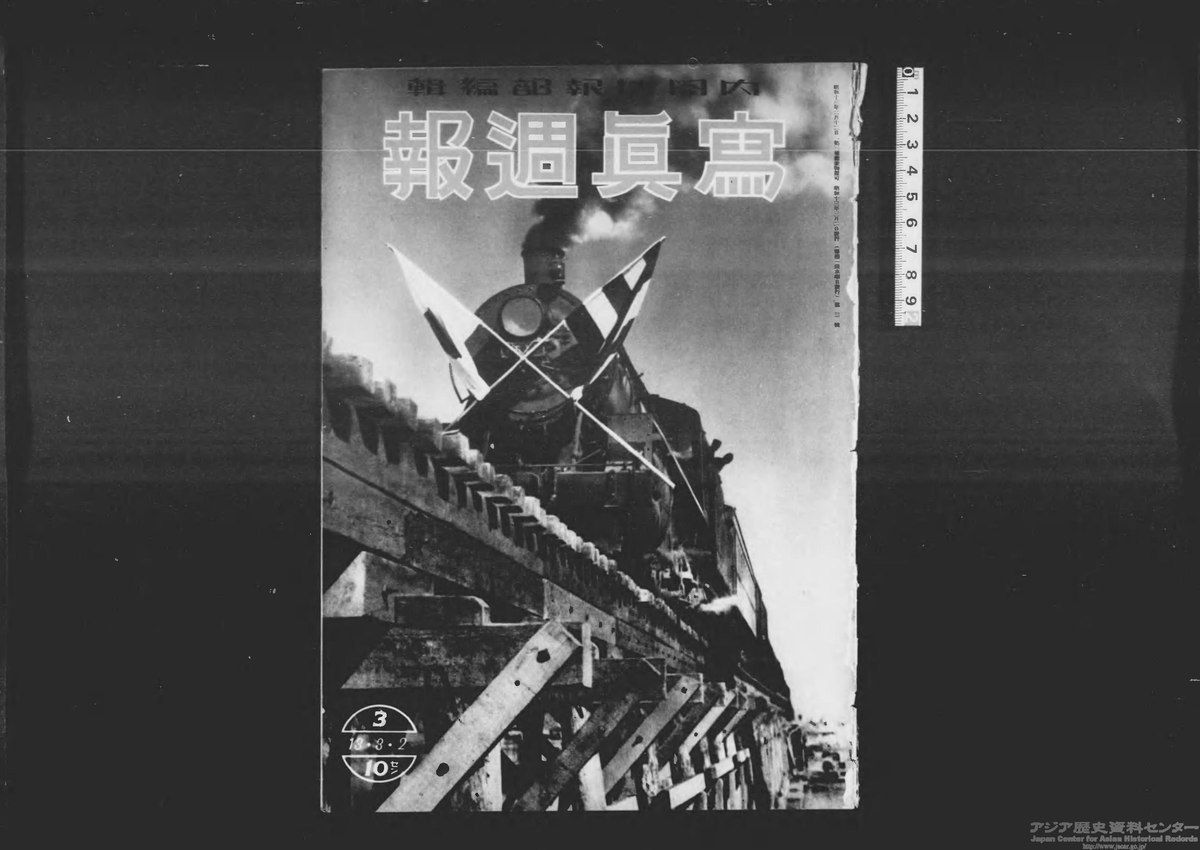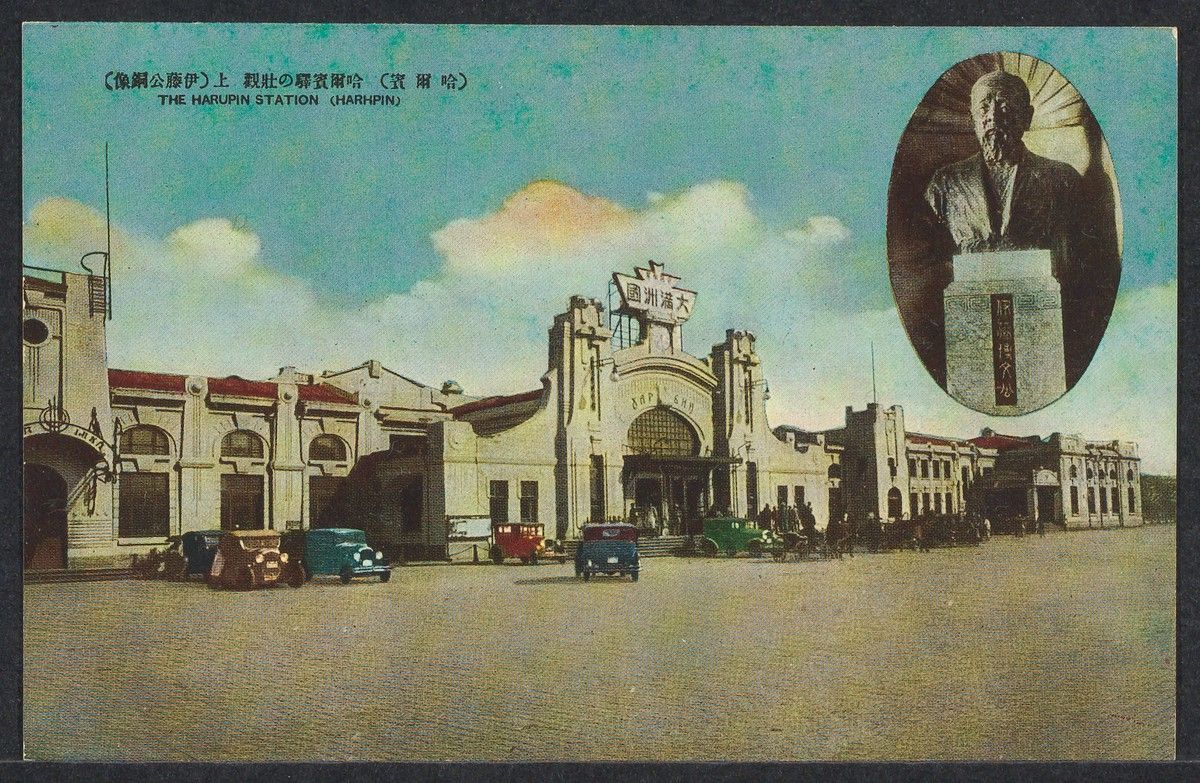A Collection of Modern Manchurian Historical Documents
Recently, while traveling in Manchuria and writing articles, I often need to consult a lot of historical documents. I don’t want these valuable historical resources to rot in my own favorites or hard drive, so I organized them into a directory in the form of Tencent online documents . This not only makes it easier for me to quickly find the resources I need, but also makes it easier to share, so that more people who want to understand and study the history of Manchuria and the Manchurian Railway can obtain information more conveniently.

The catalog is roughly composed of six parts: books, atlases, maps, papers, historical archives and university websites (databases). Resources on the Internet will directly link to the URL where the content is located. Some websites are located outside the Great Firewall, so users inside the Great Firewall should pay attention. For some electronic resources that are not on the Internet, I use Alibaba Cloud Disk to share them. The contents of the catalog will be updated from time to time in Tencent Online Documents .
Due to my own ability and hobbies, the content of this catalog will focus more on the history of the Manchurian Railway and the history of the South Manchurian Railway, and other aspects are relatively less involved. If you have other Manchurian historical resources such as architectural history, pioneering history, economic and agricultural history, etc. that you want to share with more people, please contact me through the WeChat public account background or send an email to: Stephenyeong13@gmail.com .
- This document follows the CC BY-NC-ND 2.0 rules: shareable, name attribution required, non-commercial use, and no self-modification allowed.
- This document integrates the modern and contemporary historical documents of Manchuria and the Manchurian Railway, and is arranged in the form of a catalog. It is roughly composed of six parts: books, atlases, maps, papers, historical archives and university websites (databases). The content will be updated from time to time.
- Please note that the explanations in this document are in Japanese.
1. Books
"Forty Years of Manchuria Development" (Two Volumes)
The Manchuria History Association began compiling the book in 1953 after the war and published it in 1964. The Chinese version was translated and published by the Liaoning Compilation Group of the Fourteen-Year History of Northeast China in 1988. The Manchuria History Association is mainly composed of former employees of the Manchuria Railway. Using a large amount of first-hand archival materials, it compiled the construction of transportation, industry, agriculture, concessions, agriculture, and immigration in Manchuria from the time Japan acquired the South Manchuria Railway after the Russo-Japanese War in 1905 to the time Japan was defeated in 1945.
History of the Manchurian Railway
Compiled by Professor Su Chongmin, the content is mainly arranged in chronological order and by successive presidents of the Manchuria Railway. The content focuses on Japan's invasion and plunder of Manchuria, and the time span is also 1905-1945, with the Manchurian Incident and the founding of Manchukuo as the main dividing lines.
"Manchuria Railway Archives Collection" in 15 volumes
This is the Chinese translation of the original letters between the South Manchuria Railway and Japan regarding the negotiations between Manchuria and the Qing Dynasty and the Nationalist Government. However, it is only a simple translation and chronological arrangement of the original text. The content is rather complicated and contains a huge amount of information.
"Overseas Railways during the Japanese Empire: From Taiwan, Korea, Manchuria, Katayama to the South Pacific Islands"
The author Tetsuhiko Omuta uses a traveler's perspective to show the operation mode of Japan's overseas railways at that time, the diversity of cross-border transportation, and the implementation methods of water-rail transport. Compared with the above-mentioned history books, it is more interesting and it is recommended to use this book as an introduction to understand the history of the Manchurian Railway.

"In the early 20th century, when aviation and road transportation were not yet developed and there was a lack of long-distance transportation methods, trains were the first choice for governments to govern the country and for people to travel around. At that time, the Empire of Japan, which was actively expanding its overseas territory, also built a vast railway network in Taiwan, Korea, Manchuria (Northeast China), Kata (Sakhalin Island), and the Nanyang Islands to consolidate the rule of the empire. At the same time, the general public also used these convenient railways to travel around East Asia.
The author, Tetsuhiko Komuta, has collected a wealth of graphic information and, with a relaxed style, introduces the history of the development of Japan's overseas railways at the time, and depicts the experience of Japanese people traveling overseas at the time. What tourist attractions did they also consider? Immigration procedures? Travel safety tips? Each region also has a unique style of station, as well as customs and folkways, presenting a very distinctive travel scenery. With the rich historical photos and maps in this book, it makes people feel as if they have traveled through time and space, transformed into passengers running on the train platform, and embarked on an exciting railway journey. "
—Books.com.tw book review
"Japan Railways Travel Map Mansu Kata"
The Manchuria Railway Travel Atlas, published in 2009, contains detailed information on route content, station names, etc. It also covers many abandoned routes and forestry and mining branch lines. It is an introductory book for understanding the history of Manchuria railways.
Manchuria Korea Remake Timeline
Produced by Shinchosha, it is currently an important way to obtain a timeline of Manchurian history. No electronic version has been found yet.
"Heilongjiang Province Railway Annals", "Heilongjiang Province Transportation Annals", "Jilin Province Transportation Annals", "Liaoning Province Transportation Annals"
Local chronicles are mostly edited and published by the competent departments of each province. They provide a relatively detailed account of the historical background of railways and transportation before the founding of the People's Republic of China and the development history after the founding of the People's Republic of China. Paper books can be found in the local chronicles reading rooms of libraries in various provinces, and the prices for purchase at Kong Fuzi are also within an acceptable range.
2. Photo Album
a. Full Manchuria Atlas
- "Photo Album of Famous Places in Manchuria" edited by Matsumura Yoshibundo
- "Photo Album of the Manchurian Incident" compiled by the South Manchuria Railway Company
- "History of the Founding of Manchuria and the Shanghai Incident" compiled by Sunrise News Agency, 1932
- "Leap into Manchuria Painting Album" New Beijing Tourism Association 1942
There are many photos of buildings and scenery, photos of people in their twilight years, and life at that time can be seen between the walls.
- "Manchuria Railway Certificate" Manchuria Railway Administration 1935
The title of the book is "National Railway Photo Album", and the content contains photographs of the railway, and it contains pictures of the scenery and people of various places along the railway.
- "Manzhou Photo Album" Minami-Manzhou Railway Co., Ltd. 1932
- "Manzhou National Overview" Manzhou National News Agency Photo Department 1934
A collection of photos published to celebrate the accession of Puyi, the emperor of Manchukuo. The content mainly reflects the achievements of the new Manchukuo: the construction of a new capital, the unification of the currency, etc.
Celebrating the founding of Manchukuo
- "Photo Album to Commemorate the 10th Anniversary of the Founding of the Great Manchuria Empire" Manchuria Information Center 1942
The content focuses on the achievements of post-founding construction
- "Manchukuo" Manchukuo State Council Information Office 1940
b. Atlas of major cities
Xinjing(Changchun)
"Leap into the Capital" Manchurian Empire Government 1937
This is a photo collection published by the Manchurian Imperial Government in 1939 to celebrate the completion of the first five-year plan for the construction of the new capital. After measuring the appearance of any wasteland and completing the construction of buildings, he created photos of parks and people who lived there. The instruction manual is available in both Chinese and English.
Fengtian(Shenyang)
Fengtian Guide, reprinted in 1932
Dalian
"Dalian Xiezhenti: The Source of the Development of Manchuria and Mongolia" Rihuatang Bookstore 1921
This is a photo collection published by the Nichikado Bookstore in Lushun, Dalian in 1910. In addition to the introduction, there are also many photos of beautiful Dalian buildings posted.
Dalian Scenic Spots Photo Album Tokyo Hall 1924
"Lushun Showa 7th Edition" Nanmanshu Railway Co., Ltd. 1932
c. Travel guide
- "Minami-Manchukuo Railway Travel Guide" Minami-Manchukuo Railway Co., Ltd. 1930
- "Travel on the Continent" Japan Travel Association 1940
This is a guidebook for mainland travel that was launched by the Japan Tours Business Travel (now JTB) in 1940. The Japan Tours Business Travel Agency was renamed as Toa Travel Agency the following year. We also publish accommodation charges, notes on travel, and overviews of various locations and train fares.
3. Map (time series)
a. Full map
"The Economically Viewed Road to Manchuria and Mongolia" is a record of the book published by the Minami-Manchuria Railway Co., Ltd. in 1939. In the road network, the distances between each town and village are recorded.
This is a map of the railway routes in Manchuria at the end of Showa 6 (1931). The implementation year and opening year of each route are listed in the table.
- List of Manmon Corporation and its major factories and business units 1931
- Latest map of Manchuria
- New Administrative Divisions of the Manchurian Empire 1934
In the first year of Kantō, the division of provinces and flags of Manchuria was recorded. This is a map that was sent as a gift to the embassy of the Manchurian country in Japan and with a seal.
- Economic and Transportation Map of Manchukuo 1937
- The latest map of Manchuria and Northern Taiwan
- Economic Map of Manchuria 1938
The record of the 5th year edition of Kant is also included. It contains statistics on population and major industries, major products in various regions, and information on the economy of Manchuria.
- Map: Manchuria Railway Map 1940
- Manchuria pioneers planting map 1940
- A Brief Map of Manchukuo 1942
- South Manchuria Railway Railway Map 1945
- New Map of the Nine Provinces of Northeast China 1945
b. Railway route map
- Beijing-Tujia Line (Long Tujia Line)
- Jingfeng Line (Shenyang-Sanyang Line)
c. Maps of major cities
- Harbin《 Harbin Special City 》《 Harbin 》《 Harbin Street Map 》
- Qiqihar " Qiqihar (Longjiang) " " Ang'ang Creek "
- Mudanjiang " Attached Attachment to Mudanjiang Urban Plan " " Suifenhe "
- Xinjing (Changchun): Xinjing , Changchun
- Siping 《 Siping Street 》
- Fengtian (Shenyang) " Fengtian (Shenyang) " " Fengtian " " Fengtian Information Special Map " " Leap Forward to the Great Fengtian Map "
- Fushun " New Fushun City Street Plan "
- Andong (Dandong): " Sinuiju Prefecture "
- Dalian, Lushun: " Dalian City " and " Lushun "
d. Map of Japan (Greater East Asia Map)
e. Others
4. Papers
I am not going to list all the links to the papers here, but only introduce the paper search platform. When you are ready to search for relevant literature, you can first search for corresponding Chinese literature in CNKI , which is also the most convenient way to obtain literature. If it does not meet your needs, Google Sclolar or Baidu Scholar is a good way. If the searched papers directly provide download links, it would be even better. If not, but the paper has a Doi number, you can paste it into Sci-Hub to download it.
J-stage is an online publishing platform for Japanese papers, most of which can be downloaded for free.
Sci-hub may not be accessible via the link below due to its nature. Please Google it yourself.
5. Historical Archives
- National Congress Library
The National Diet Library is the national library of Japan, directly under the Diet. In addition to providing assistance to Japanese Diet members in their investigations, research and other legislative activities, it also serves various government agencies and the general public. According to Japan's legal deposit system for publications, the library is also the only legal deposit library that collects all publications in Japan. (From Wikipedia)
a. "Photo Weekly"
Weekly Photo (しゃしんしゅうほう) is a domestic weekly national policy magazine edited and published by the Cabinet Intelligence Department (のち情报局). It was published from February 16, 1938 (first issue) to July 11, 1945 (combined issues 374 and 375). Price is 10 yuan, A4 size, 20 pages, printed and produced by the Cabinet Printing Bureau. A maximum of 200,000 copies have been published.

Photo Weekly volume-by-volume introduction and catalog database link
"Shashin Shuhou was a weekly pictorial magazine published by the Cabinet Intelligence Bureau of Japan from 1938 until July 1945, with a total of 370 issues. The magazine was sold at 10 sen per copy and could be purchased at official gazette sales offices, bookstores, and train station kiosks throughout Japan (in 1940, a bowl of soba noodles cost 15 sen), and its circulation was about 200,000 copies as of March 1941.
As a national policy magazine, "Shashin Shukan" was published as part of the government's propaganda and promotion policy at the time. Most of the content was about the economic development and construction achievements of Japan's overseas colonies (Manchuria, Korea, Taiwan, and Japanese-occupied North China). Compared with other text publications, "Shashin Shukan" magazine used large photos and was more like a public enlightenment publication aimed at reaching the masses directly. The main purpose of this magazine was also to make national policies easy to understand and to instill awareness of the current situation by using the photographic medium that the public was familiar with and easily attracted their emotions, together with the written text. "
— The world of Showa in "Photo Weekly"
- National Library of Japan
The National Archives of Japan is the national archives of Japan. It is an independent administrative agency directly under the Cabinet Office. It is responsible for collecting all official documents of Japan's history and making them available to the public. The main library is located in Kitanomaru Park, Tokyo, near the Imperial Palace, and has a branch in Tsukuba City, Ibaraki Prefecture. (From Wikipedia)
- Manchuria Government Gazette
The Manchukuo Government Gazette is a publication of other official documents and announcements as specified in Article 5 of the "Provisional Order on the Procedure of Official Documents" (Decree No. 15 of March 9, 1891) and other matters that must be published (Article 1 of the "Provisional Regulations on the Publication of Government Publications"). Official documents include documents, executive orders (laws, religious orders, military orders, international treaties, budgets and contracts related to foreign budget liabilities), court orders, ministerial orders, bureau orders, ministry orders, letters of appointment, commission orders, orders of instruction, directives, notices, various communications (inquiries, reports, official letters), approvals, and others, miscellaneous reports (regulations, regulations, reports, etc.), public notices, and announcements.
6. University website/database
- Takushoku University - Former Foreign-Related Data Archive
- Kanagawa University - Overseas Shrine Database Overseas Shrine Detailed List
- Waseda University - Classical Literature Collection - Partial Chinese, Manchurian and Japanese Literature
- Beijing Jiaotong University - Manchuria Railway Research Association Manchuria Railway Research Materials
- Harvard University- Harvard-Yenching Library HOLILIS

“The collection includes one of the largest and most comprehensive Manchukuo resources in North America. The diverse materials provide a glimpse into the experiences of ordinary people from a variety of backgrounds who lived during this period. About half of the objects are books, but the most striking and unique are the smaller items, from sheet music to photo albums, movie posters and board games, as well as scrapbooks, diaries and travel brochures from an era when Manchuria, with its highly developed railroad network, was widely promoted as an exotic travel destination in Asia and around the world.”
—Introduction to the Manchukuo Collection homepage
Through the Harvard Library's online search system HOLLIS, even non-Harvard staff can access a considerable amount of historical resources, including all pictures and postcards that can be directly accessed; some historical maps can also be accessed through a dedicated browser. Postcards were an important part of the propaganda of the Manchurian Railway and Manchukuo itself. Today, we can still use postcards to understand the magnificent architectural construction, the railways that reached all directions, and the living conditions of the people of that era.
- University of Texas - Library Map Collection 1940s, High-Scale Topographic Map of Manchuria
- Gakushuin University - Preservation and destruction of historical heritage in cities in Eastern Asia China and Manchuria postcard collection
- Aichi University - China War-Pre-Elegant Postcards Collection of Postcards from China and Manchuria
- University of the Ryukyus - Manchuria Related Resources JACAR search page
- Shiga University - Data on the former settlement of Dejital Akai JACAR search page
- Kyoto University - International Center for Japanese Studies Database
- Japan Society of Civil Engineers Library - Civil Engineering Library Documentary Archives Pre-war books and magazines; Photo and folio books; Civil Engineering Library documentary materials; Drawings and historical materials archives
7. Others
- Youtube
East Asian Channel - AI colorization of videos shot by Mantetsu and Man'ei
ARAMAKI5 - Historical songs of Japan, Manchuria and Taiwan
- " A Century of Railway Travel " is a collection of historical materials centered on railway transport. There are many precious pictures, some of which have original pictures.
- "Station stamp collection" - Japan, Manchuria, Korea, Taiwan station stamp collection ekibento shuincho
- " Timetable History Museum " - a personal collection of Manchuria Railway text materials, no clear large pictures
- People's Pictorial Electronic Edition - Historical Photos of China 1950-1970
- China Railway Map - Current China Railway Route Map
- Detailed list of Mantetsu railway routes
You can click on the Tencent online document link to get the latest version of the catalog.
Like my work? Don't forget to support and clap, let me know that you are with me on the road of creation. Keep this enthusiasm together!

- Author
- More